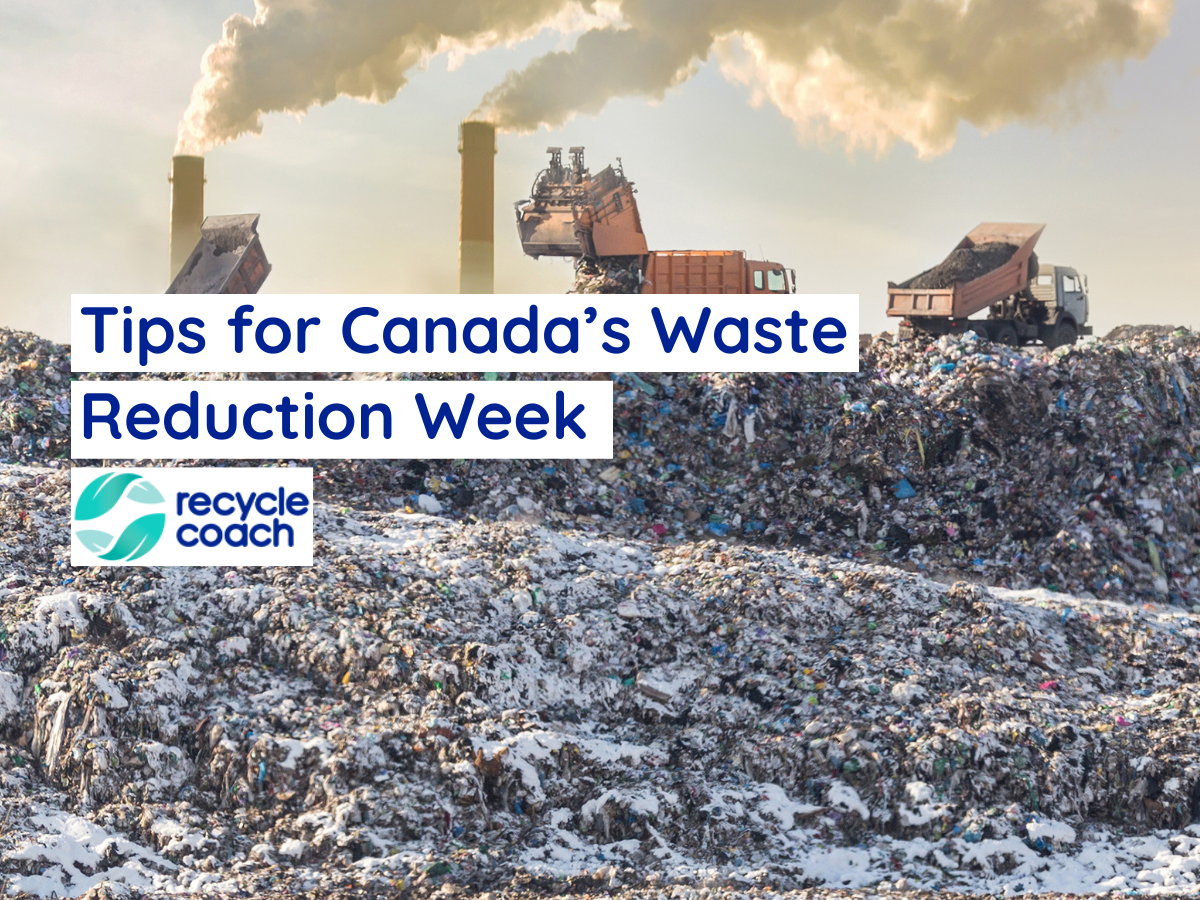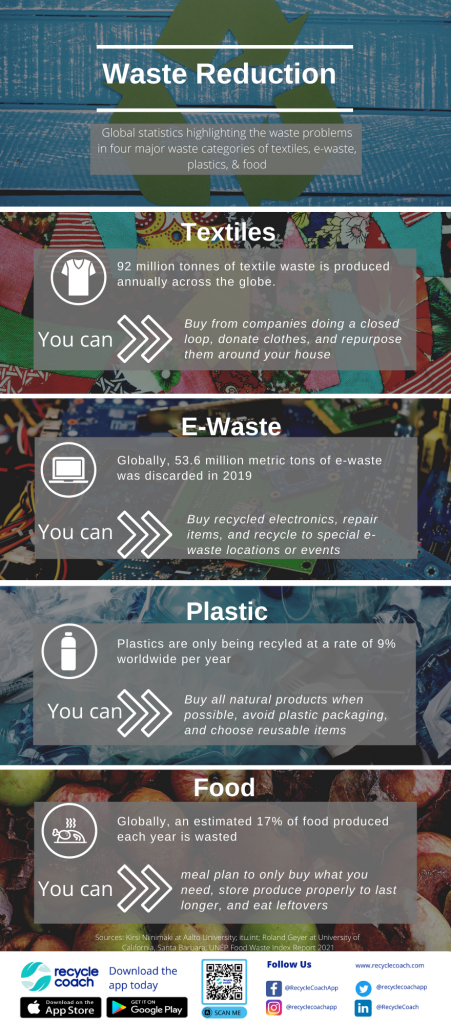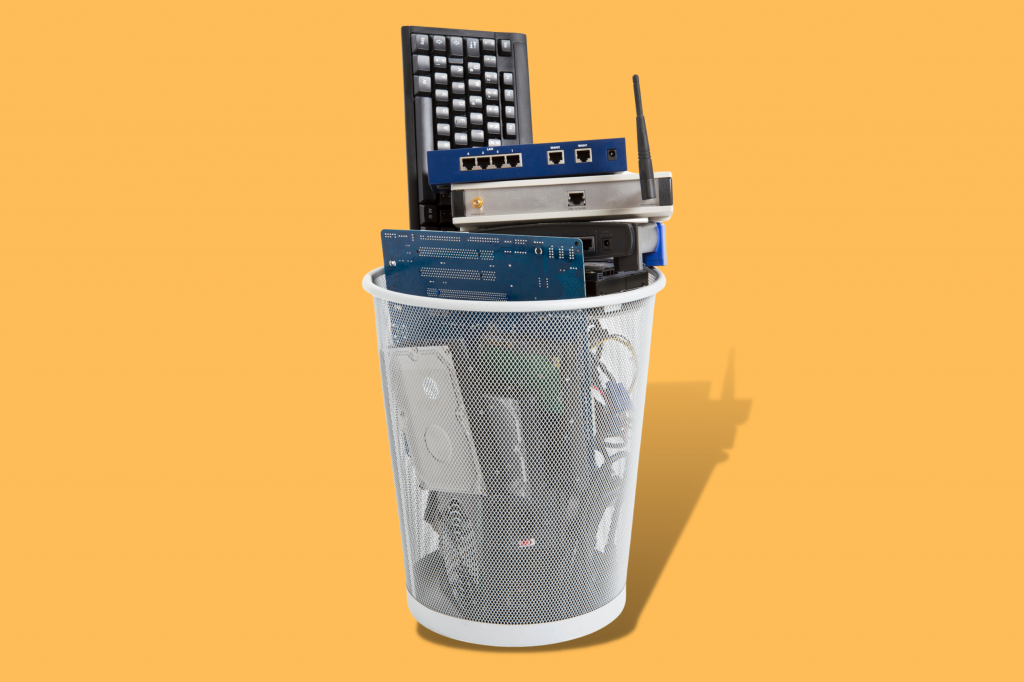Tips for Canada’s Waste Reduction Week

Waste Reduction Week in Canada is a great time of year to reevaluate the waste you produce in your own home and find better eco-friendly solutions.
WRWcanada.com celebrates 20 years of taking the time to help the environment in Canada by creating solutions that will benefit our current environmental issues- like climate change, water pollution, and natural resource preservation.

This year’s celebration kicks off on October 18th and runs through October 24th. There is a focus on 7 different areas in your life you can reduce waste. Find out tips for each waste reduction topic below.
1. Seek out Businesses that use a Closed Loop System

For decades now, production of goods has been focused on a linear economy where a product is made, used then discarded. This mostly requires using virgin raw materials that end up in landfills. Recycling reacts to this process by attempting to salvage the waste for reuse into new products.
Now imagine if instead of having a system that is reactive, it was proactive. Waste reduction week highlights the circular economy model that proactively plans how to dispose of a product as the product is first being designed.
This creates a closed-loop system with little to no waste. Read about some of the companies trying to close the loop and create a circular economy within their brand here.
You can put this into action by:
- Seeking out companies that use recycled materials
- Finding stores that have take-back programs for items at their end-of-life
- Repairing items when possible
2. Find Solutions for your Old Clothes

Clothing has essentially become a disposable commodity. With the use of cheap materials and lower quality mass production, clothing has become less durable. This means clothing gets disposed of at an exorbitant rate. Canadians on average buy 70 clothing items per year and throw away about 37 kilograms of textiles annually. Even more shocking is the fact that 95% of those disposed items could be reused or repurposed. There’s a lot you can do for Waste Reduction week to decrease textile waste in your home.
You can put this into action by:
- Buying from companies that work with a closed loop system, use recycled materials, or produce eco-friendly and sustainable clothing
- Donating your unwanted clothing that is not stained or ripped
- Taking better care of your clothes so they last longer. For example, you can use gentle laundering products and hang to dry.
- Seeing if you can repurpose them around your house as rags, turn t-shirts into strips to make a rag rug, or sew them into new items
3. Reduce your E-Waste

E-Waste is a growing issue as more electronic products are produced at a faster rate. Non-functioning electronics pose a problem for recycling because they have so many materials encased within the products. There are often materials that are hazardous as well.
You can read about how to put this into action:
- An Intro to E-Waste: Why it’s a Problem
- How to Repair, Reuse, and Recycle Old Electronics [Avoid Holiday E-Waste]
- What is E-waste and Why is it Harmful? (+Workplace Solutions)
4. Stop using Plastic

Only 23% of plastics since their introduction in the 1950s have been recovered or recycled, and only 11% of plastics in Canada are recycled yearly.
Although there may be ways to recycle many different plastics, not every recycling facility is equipped to handle every type of plastic. So, whenever you come across a plastic item, make sure to check in the What Goes Where search tool to see if it is recyclable at your location.
You can put this into action by:
- Choosing eco-friendly all natural items can help reduce how much plastic will end up in landfills
- Using reusable options instead of disposable plastics
- Buying products that use less plastic packaging
5. Fix your Food Waste

Canadians waste 2.94 metric tonnes of food annually. 61% of that food waste is coming from households. That is a large amount of waste that individual residents can try to reduce starting this year’s Waste Reduction Week.
You can put this into action by:
- Meal planning
- Storing perishable foods, such as produce, properly
- Eating your leftovers
6. Stop Buying and Share

A sharing economy is when we relinquishing ownership of products and start borrowing instead of buying. These types of business models help to reduce waste which can make you feel good about your participation in a circular economy.
You can put this into action by:
- Using a ride-share or taking public transportation instead of buying a car
- Borrowing a book from the library instead of buying it
- Renting a bike Instead of buying one
7. Repair What is Broken

Products are made in a way that encourages single use or discarding when broken. Repair shops seem to be a great solution for your Waste Reduction Week plans, but they seem to be few and far between. It also can become expensive to pay for parts and labor to repair items that were inexpensive to begin with. While it may be more affordable to throw something out and just get a new one, that cost is high for the environment as we dispose of items that may be easy to fix.
You can put this into action by:
- Utilizing Repair Cafés. This is a way for communities to share their time and knowledge about repairing cheaper products to keep them functioning and out of landfills. You can locate a repair café here. If you don’t have one in your area, consider starting one!
- Finding a repair shop or a friend who is good at fixing things
- Seeing if there is a high school or college program that trains students in repair and maintenance. They may be willing to take items that students can tinker with
- Checking to see if you can find a way to fix it yourself with a YouTube video. Just know your limits and don’t do anything too dangerous!
Take Action by Reducing your Waste
Waste Reduction Week should be used to reevaluate how much waste your home is producing and find better solutions. Make sure to find a way to celebrate by making a change that can have a positive impact on the environment and for your home. Remember, you don’t have to fix everything at once, small changes over time can make a huge difference for the environment.
How do you plan to celebrate Waste Reduction Week in your home? Tell us below!